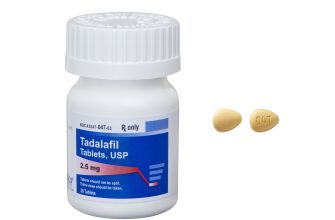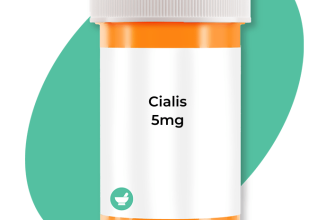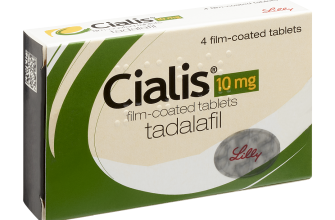Need rapid relief from performance anxiety? Propranolol, a beta-blocker, might help. It reduces physical symptoms like trembling and rapid heartbeat, allowing you to focus on the task at hand. Remember to consult your doctor before using it, as it interacts with other medications.
This medication targets beta-adrenergic receptors in your heart and nervous system. This action lowers your heart rate and blood pressure, effectively managing anxiety symptoms. It’s prescribed for various conditions beyond performance anxiety, including migraines and hypertension. Understanding its mechanism of action is key to safe and responsible use.
Dosage varies depending on your specific condition and individual response. Typical starting doses are relatively low, often adjusted based on your doctor’s assessment of your response. Always strictly adhere to the prescribed dosage and frequency; do not adjust it independently. Be aware of potential side effects such as dizziness and fatigue.
Before starting Propranolol, discuss any pre-existing health conditions, particularly heart problems, lung issues, or diabetes. Inform your physician of all other medications you are currently taking, to avoid potential interactions. This proactive approach ensures your safety and treatment efficacy.
This information is for educational purposes only and should not be considered medical advice. Always consult your healthcare provider for personalized recommendations and to address any health concerns.
Common Uses and Prescribed Conditions
Propranolol primarily treats high blood pressure (hypertension). It lowers blood pressure by slowing your heart rate and relaxing blood vessels.
Beyond hypertension, doctors prescribe propranolol for angina (chest pain). By reducing heart rate and force, it lessens the heart’s oxygen demand, alleviating chest pain.
This medication also helps manage certain types of irregular heartbeats (arrhythmias), restoring a more regular rhythm.
Migraine prevention is another key application. Propranolol reduces the frequency and intensity of migraine headaches for many patients.
Anxiety disorders, particularly performance anxiety, respond well to propranolol’s calming effects. It helps control physical symptoms like rapid heartbeat and trembling.
Post-traumatic stress disorder (PTSD) may also benefit from propranolol in reducing some associated physical symptoms.
Finally, propranolol sometimes treats tremor conditions, reducing uncontrollable shaking.
Remember, this information is for general knowledge and does not replace professional medical advice. Always consult a doctor before starting or changing any medication.
Potential Side Effects and Precautions
Consult your doctor immediately if you experience a slow or irregular heartbeat, shortness of breath, or swelling in your ankles or feet. These could indicate serious side effects.
Propranolol may cause dizziness or lightheadedness, especially when standing up quickly. Rise slowly to minimize this risk. Avoid activities requiring alertness if affected.
Low blood pressure is a potential side effect. Monitor your blood pressure regularly, particularly when starting treatment.
Some people experience nausea, vomiting, or diarrhea. These side effects are usually mild and temporary, but inform your doctor if they persist or worsen.
Fatigue or weakness may occur. Get adequate rest and adjust your activity levels accordingly.
Propranolol can affect your breathing. If you have asthma or other breathing problems, discuss this medication with your doctor carefully.
Cold hands and feet are common. Wear warm clothing and consider using hand and foot warmers if needed.
Rarely, propranolol may cause sleep disturbances. If insomnia develops, talk to your doctor about alternative treatment options or dosage adjustments.
Avoid alcohol while taking propranolol, as it can increase the risk of side effects such as dizziness and low blood pressure.
Inform your doctor about all other medications you are taking, including over-the-counter drugs and herbal supplements, as interactions may occur. This is particularly important with diabetes medications.
Pregnancy and breastfeeding: Discuss propranolol use with your doctor before conceiving or breastfeeding. It may not be suitable during pregnancy or while breastfeeding.
Interactions and Contraindications
Always inform your doctor about all medications you take, including over-the-counter drugs, herbal supplements, and even recreational drugs. Propranolol interacts significantly with several substances. Combining it with MAO inhibitors can cause dangerously low blood pressure. Simultaneous use with calcium channel blockers may further depress heart rate and blood pressure.
Be cautious with non-steroidal anti-inflammatory drugs (NSAIDs); Propranolol can reduce their effectiveness and increase the risk of gastrointestinal bleeding. Avoid using Propranolol with beta-agonists, as their effects oppose each other, potentially leading to unpredictable outcomes.
Certain anesthetics can interact negatively with Propranolol, potentially causing significant cardiovascular complications during surgery. Your anesthesiologist must be aware of your Propranolol use.
Contraindications include a history of severe heart block, cardiogenic shock, severe bradycardia, uncontrolled heart failure, or bronchial asthma. Propranolol is also contraindicated in patients with pheochromocytoma without alpha-blocker pretreatment.
Pregnancy and breastfeeding require special consideration. Consult your doctor immediately if you are pregnant, breastfeeding, or planning to become pregnant. Propranolol can pass into breast milk.
Individuals with liver or kidney impairment should use Propranolol with caution, and dose adjustments may be necessary. Regular monitoring of your blood pressure and heart rate is crucial.










